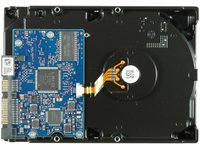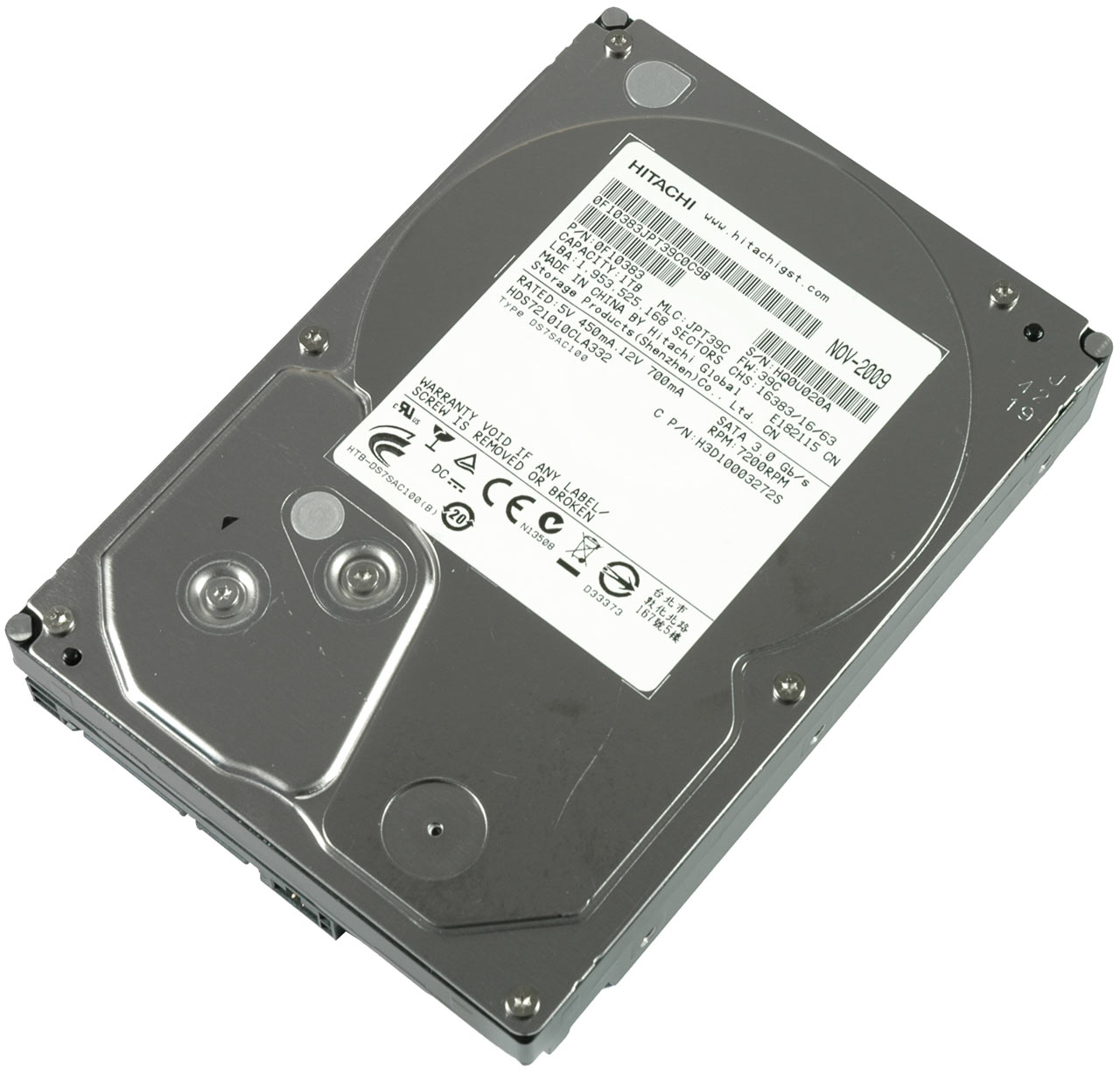Three Generations Compared: Why Storage Density Matters
Third Generation 7K1000.C (Two Platters, 2009)
The "C" is Hitachi's new model. Using the same storage density and technology that other manufacturers used to reach 2TB across four platters, Hitachi decided to stay in the mainstream and limit the 7K1000.C to two platters and 1TB. Performance-wise, the C's throughput went up to 135 MB/s—not quite enough to beat the 150 MB/s peak that Samsung’s Spinpoint F3 family reaches, but still sufficient to keep some of the competition in check. Check out our Desktop Hard Drive charts for a comprehensive comparison.
The latest drive still spins at 7,200 RPM, has a 32MB buffer, and carries a SATA 3 Gb/s interface, but the complexity reduction has led to increased efficiency. A 4.6W idle power draw rivals the level of low-power hard drives, which spin at considerably less than the common 7,200 RPM. This marks a generous decrease compared to the 7K1000.B.
Also note the lower surface temperatures. The first-gen five-platter drive went up to 48°C. The second-generation model stayed at 42°C max. With the C, we measured 41°C. I/O performance has increased, as well, which is probably more a result of performance adjustment than technology progress.


Get Tom's Hardware's best news and in-depth reviews, straight to your inbox.
Current page: Third Generation 7K1000.C (Two Platters, 2009)
Prev Page Deskstar 7K1000.B (Three Platters, 2008) Next Page Test Setup And Throughput Comparison Diagram
